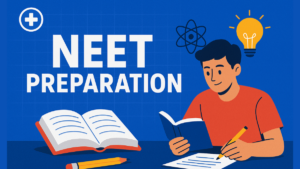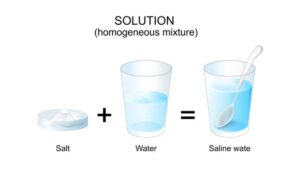The National Eligibility cum Entrance Test for admission into medical courses like MBBS and BDS for the academic session 2026-27 is expected to be conducted in May 2026. All the aspirants who are studying in class 12th or have taken a year gap for NEET 2026 Exam preparation must start preparing by reading all the important topics mentioned in the NEET Syllabus 2026. To assist aspirants, we have shared the NEET Notes for Organisms and Population chapter from the NEET Biology Syllabus 2026 in the article below. Scroll down in the article and download the NEET Notes PDF for exam preparation.
Organisms and Population
“Organisms and Population” is a branch of ecology that studies individual organisms and groups of organisms (populations) in their environment. Key concepts include the individual organism’s ability to adapt to abiotic factors like temperature, water, and light, and how populations grow and are measured by attributes such as birth/death rates, age structure, and population density. Population dynamics are influenced by births, deaths, immigration, and emigration, and various interactions, such as competition, occur between individuals and species.
Ahead, we have shared topic wise overview of the Organisms and Population chapter so that all the aspirants can have better understanding of it.
1. Organisms and Their Environment
Organisms live in diverse habitats ranging from deserts and forests to oceans and high mountains. Each habitat provides different abiotic (non-living) and biotic (living) components that affect survival.
Abiotic Factors
- Temperature: Influences metabolism and distribution of organisms.
- Water: Essential for life; determines organism presence (e.g., desert vs aquatic habitats).
- Light: Affects photosynthesis, reproduction, and daily rhythms.
- Soil: Provides nutrients, water, and habitat for plants and microorganisms.
Response to Abiotic Factors
Organisms exhibit different strategies to cope with abiotic stress:
- Regulators: Maintain constant internal environment (e.g., humans, birds).
- Conformers: Do not regulate; internal conditions change with the environment (e.g., reptiles).
- Partial regulators: Can regulate only in a limited range.
- Migrators: Move temporarily to more favorable conditions (e.g., birds).
- Suspenders: Enter dormancy (e.g., hibernation in bears, seed dormancy in plants).
2. Adaptations
Adaptations are special features that help an organism survive and reproduce in its environment.
- Desert animals: Have long loops of Henle to conserve water.
- Desert plants: Possess thick cuticles and spines to reduce water loss.
- Polar animals: Have thick fur and fat layers for insulation.
- Aquatic animals: Have gills for respiration.
3. Population
A population is a group of individuals of the same species living in a specific geographical area at a particular time. It is the smallest unit of ecological study.
Population Attributes
Unlike individual organisms, populations have measurable characteristics:
- Population Density: Number of individuals per unit area.
- Natality (Birth Rate): Number of births per unit time.
- Mortality (Death Rate): Number of deaths per unit time.
- Immigration: Arrival of new individuals from outside.
- Emigration: Departure of individuals from the population.
- Age Distribution: Ratio of individuals in different age groups (pre-reproductive, reproductive, post-reproductive).
4. Population Growth
Population size changes due to birth, death, immigration, and emigration.
Types of Population Growth
- Exponential Growth:
- Occurs in unlimited resources.
- Described by the equation:
- where r = intrinsic rate of natural increase.
- Curve shape: J-shaped.
- Logistic Growth:
- Occurs when resources are limited.
- Growth slows down as population reaches carrying capacity (K).
- Equation:
- Curve shape: S-shaped (Sigmoid curve).
5. Population Interactions
Populations of different species interact in various ways:
| Population Interactions | |||
| Interaction Type | Species A | Species B | Example |
| Predation | + | – | Tiger and Deer |
| Parasitism | + | – |
Human and Tapeworm
|
| Commensalism | + | 0 |
Barnacles on Whales
|
| Mutualism | + | + |
Lichen (Algae + Fungus)
|
| Competition | – | – |
Flamingos and Fish for Zooplankton
|
6. Population Regulation
Natural populations are maintained through balance between birth and death rates. Regulation occurs via:
- Density-dependent factors: Predation, disease, competition.
- Density-independent factors: Floods, droughts, temperature changes.
Importance of Organisms and Population NEET Notes
Preparing for the Organisms and Population chapter using NEET Notes is very helpful for the students. We have detailed some of the pointers explaining the importance of Organisms and Population NEET Notes:
- Foundation of Ecology: This chapter builds the base for understanding higher ecological levels such as communities, ecosystems, and biosphere. It helps students grasp how organisms interact with their environment.
- Concept Clarity for NEET: Many NEET questions are directly based on this chapter. Clear concepts of population growth, interactions, and adaptations can boost accuracy in the Ecology section.
- Understanding Adaptations: The topic explains how different organisms adapt to environmental changes, ensuring survival in varied habitats like deserts, polar regions, and aquatic ecosystems.
- Real-Life Ecological Applications: These notes help students relate theoretical ecology to real-world examples such as migration, hibernation, and climate adaptation among species.
- Foundation for Environmental Studies: It enhances understanding of environmental balance, species interactions, and conservation, which are essential for biology and environmental awareness.
- Helps in Quick Revision: Well-organized NEET notes make it easier to revise important ecological terms, equations, and examples before the exam.
- Improves Analytical Skills: Learning about population dynamics, birth-death rates, and carrying capacity sharpens analytical thinking and helps solve numerical questions in NEET.
- Supports Interdisciplinary Learning: The concepts of organisms and population link biology with geography and environmental science, helping students gain a holistic view of life on Earth.
Important Questions for NEET – Organisms and Population
- Describe how ecologists study population density in migratory species.
- How does competition lead to resource partitioning in nature?
- Describe the importance of water as an abiotic factor in an ecosystem.
- What are abiotic factors? Explain their role in shaping an organism’s habitat.
- Differentiate between mutualism and commensalism.
- Why are small animals in polar regions rare compared to tropical areas?
- What is carrying capacity? Why is it important in population regulation?
- Derive the equation for exponential population growth.
- Differentiate between acclimatization and adaptation.
- How does intrinsic rate of natural increase (r) influence population growth?
- How does predation help maintain ecological balance?
- Define population and population density.
- What is symbiosis? Explain its different types with examples.
- Give examples of plants that use chemical defense against herbivores.
- A population of 1000 deer increases by 100 births and decreases by 40 deaths annually. What is the growth rate per year?
- Why do Arctic fishes not freeze even in sub-zero water temperatures?
- Why is exponential growth unsustainable in the long term?
- Why do desert lizards regulate body temperature by behavioral means instead of physiological ones?
- Explain the role of herbivory in ecosystem dynamics.
- How do barnacles and whales demonstrate commensalism?
- Explain how population growth in humans differs from that of other organisms.
- What is amensalism? Give one example.
- Define regulators, conformers, and suspenders with suitable examples.
- Explain the role of density-dependent and density-independent factors in regulating population size.
- Explain the term hibernation with an example.
- Explain how polar bears and desert plants show contrasting adaptations to temperature.
- How can the concept of carrying capacity be applied in human population control?
- Describe a case of mutualism found in plants.
- How will global warming affect the distribution of temperature-sensitive species?
- How do aquatic animals adapt to osmotic stress?
- What are immigration and emigration? How do they affect population size?
- Draw and explain the J-shaped and S-shaped population growth curves.
- Compare exponential and logistic growth models.
- Give one example each of parasitism and competition from the animal world.
- Explain the term “age distribution” and its significance in population studies.
- How does temperature influence the distribution of organisms?
- Differentiate between natality and mortality with examples.
- How do hosts and parasites co-evolve in nature?
- What is migration? Give two examples of migratory species.
- What is adaptation? Mention types of adaptations with examples.









 NEET Preparation Strategy 2026: Detailed...
NEET Preparation Strategy 2026: Detailed...
 Free NEET Sample Papers 2026 PDF | Downl...
Free NEET Sample Papers 2026 PDF | Downl...
 Salt Analysis NEET Notes, Check Importan...
Salt Analysis NEET Notes, Check Importan...









